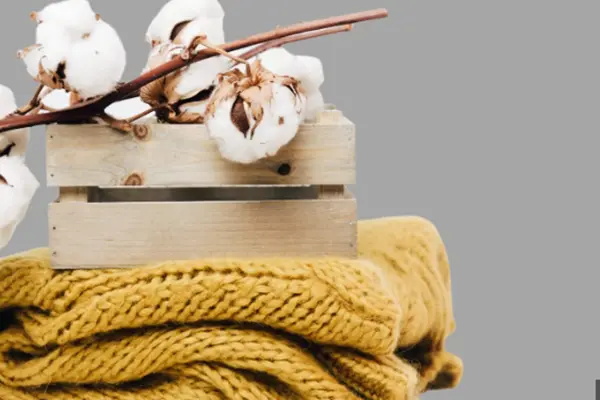Cotton yarn is a fundamental material used in textiles, garments, and a wide range of everyday products. Its softness, breathability, and durability make it a popular choice for everything from clothing to home furnishings. But how is cotton yarn made? The process of transforming raw cotton into yarn involves several complex steps, from harvesting the cotton plant to spinning it into fine threads. In this article, we’ll explore how cotton yarn is made and the stages that turn fluffy cotton fibers into usable yarn.
1. Harvesting the Cotton
The journey of cotton yarn begins in the fields, where cotton plants are grown. Cotton is primarily cultivated in warm, dry climates like those found in the southern United States, India, China, and several African countries.
- Picking the Cotton: Traditionally, cotton was hand-picked, but today, most cotton is harvested mechanically using cotton-picking machines. These machines remove the cotton bolls from the plant, leaving the stems behind.
- Ginning: After the cotton is harvested, it’s taken to a cotton gin, a machine that separates the cotton fibers (lint) from the seeds and debris. The cotton gin, invented by Eli Whitney in 1793, revolutionized the cotton industry by drastically speeding up this process. The ginned cotton is then pressed into bales for transportation to spinning mills.
2. Cleaning and Preparing the Cotton
Once the cotton reaches the spinning mill, it goes through several cleaning processes to remove any remaining impurities and prepare the fibers for spinning.
- Opening and Blending: The cotton bales are opened, and the fibers are spread out and blended. Blending cotton fibers from different bales helps ensure uniform quality in the yarn. Large machines called openers break up the compressed cotton fibers into smaller, manageable tufts.
- Carding: The next step is carding, a process that disentangles and aligns the cotton fibers. A carding machine has rotating drums covered with fine wire brushes that comb through the cotton, aligning the fibers parallel to each other. This results in a soft, thin web of cotton called a sliver. The sliver is then coiled into large cans, ready for the next stage.
- Combing (Optional): In some cases, the cotton is combed to remove short fibers and impurities. Combing creates a smoother, finer yarn, which is typically used in high-quality textiles. The combing process adds an extra step but produces a yarn that is stronger, more uniform, and softer to the touch.
3. Drawing and Roving
After carding (and combing, if applicable), the cotton fibers are still relatively loose and not yet twisted into yarn. The next stage involves drawing and roving, which begin to shape the fibers into a more consistent form.
- Drawing: The slivers are fed through drawing frames, which pull and stretch the fibers, reducing their thickness and making them more uniform. Several slivers may be combined into one during this process to further even out the fibers.
- Roving: In the roving stage, the fibers are gently twisted into a loose, slightly twisted strand called a roving. This twisting gives the fibers more strength and prepares them for the final stage of spinning. The roving is wound onto bobbins and is now ready to be spun into yarn.
4. Spinning the Cotton
Spinning is the most critical step in the production of cotton yarn. It is the process that transforms the roving into the yarn we know and use in textiles.
- Ring Spinning: The most common method for spinning cotton yarn is ring spinning. In this process, the roving is drawn out, further twisted, and wound onto spindles. The more the yarn is twisted, the finer and stronger it becomes. This method produces high-quality, durable yarn suitable for various applications, from fabrics to sewing threads.
- Open-End Spinning: Another method, called open-end spinning, is faster and more efficient for producing coarser yarn. In this process, the fibers are fed into a rotor, which spins them into yarn without the need for as much twisting. Open-end spinning is often used for bulkier, lower-cost yarns used in items like towels or denim.
5. Winding and Packaging
After the cotton yarn has been spun, it must be wound onto spools or cones to be used in textile manufacturing.
- Winding: The yarn is unwound from the spindles and wound onto larger spools or cones. During this process, any broken or weak sections of yarn are detected and removed to ensure the yarn’s strength and quality.
- Packaging: Finally, the yarn is packaged for shipping to textile mills, where it will be woven or knitted into fabric. Some yarns may be dyed at this stage, depending on their intended use, while others are left in their natural state to be dyed after the fabric is made.
6. Quality Control
Throughout the entire cotton yarn-making process, quality control is essential. Spinning mills use a variety of tests and inspections to check the strength, evenness, and consistency of the yarn. Defects like weak spots, uneven thickness, or broken fibers are identified and corrected to ensure that the yarn meets industry standards.
Conclusion
The process of making cotton yarn is an intricate and multi-step journey that transforms raw cotton from the field into a versatile and widely used material. From harvesting and ginning to carding, spinning, and winding, each step plays a vital role in ensuring that the yarn is strong, smooth, and ready to be turned into fabric. Whether it’s for clothing, household textiles, or industrial uses, cotton yarn remains an essential product in the textile industry, and its production continues to evolve with new technologies and innovations.






